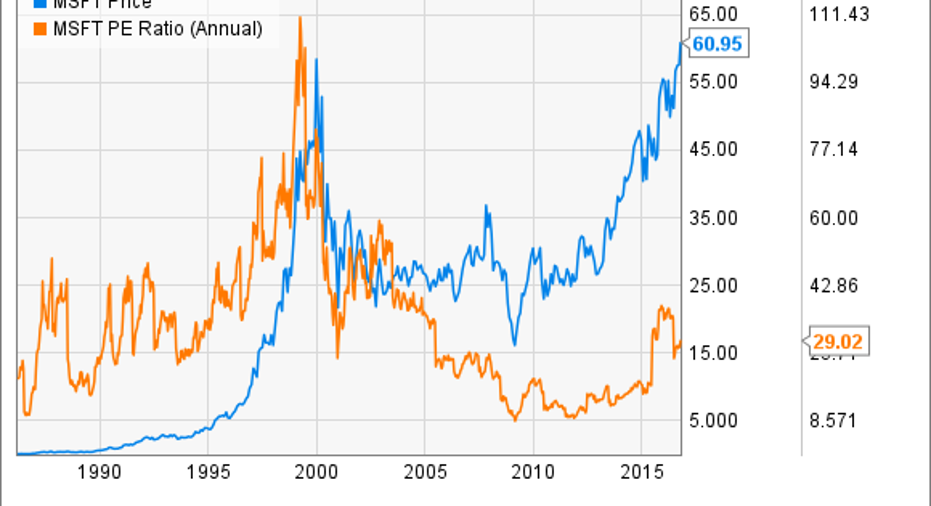Microsoft Stock Forecast :- Microsoft Stock Price Projection Microsoft has garnered global recognition for its achievements in the cloud, software, and gaming sectors. With a strong foundation in innovation and a robust market presence, Microsoft continues to attract investor interest worldwide. As we look ahead, predicting the trajectory of Microsoft’s stock price for 2025, 2030, and 2040 becomes a critical exercise.
Projections suggest a potential rise to $600.35 by 2025, $1,602.98 by 2030, and $5,009.92 by 2040, reflecting optimism about Microsoft’s future growth prospects fueled by its strategic initiatives and market leadership.

Read More
- Forecasting Vital Farms Inc. (VITL) Share Price : Vital Farms (VITL) Stock Price Prediction 2024 To 2030
- Gvk Power Share Price Target
Microsoft Stock Price Target 2025, 2026, 2027, 2028, 2029, 2030 To 2040
stock price predictions for Microsoft:
- 2025: $800.23
- 2026: $950.58
- 2027: $1,100.93
- 2028: $1,251.28
- 2029: $1,401.63
- 2030: $1,602.98
- 2035: $3,005.96
- 2040: $5,009.92
| Year | Low Case (USD) | Base Case (USD) | High Case (USD) |
| 2025 | 529.57 | 600.35 | 800.23 |
| 2026 | 600.35 | 700.70 | 950.58 |
| 2027 | 651.13 | 801.05 | 1100.93 |
| 2028 | 701.91 | 901.40 | 1251.28 |
| 2029 | 752.69 | 1001.75 | 1401.63 |
| 2030 | 803.47 | 1102.10 | 1602.98 |
| 2035 | 1004.34 | 1377.65 | 3005.96 |
| 2040 | 1505.21 | 1853.20 | 5009.92 |
Microsoft Stock Forecast 2025
Forecasts from both personal analysis and industry experts suggest a bullish outlook for MSFT. Price estimates range between $529 and $800, indicating a projected increase from its current valuation. This underscores Microsoft’s strong market presence in software and cloud computing, positioning it favorably for future growth.
Microsoft Stock Price Prediction 2030
Heading into 2030, the outlook for Microsoft is optimistic. In the base scenario, the stock is estimated to reach $1,100, with a bullish prediction suggesting it could potentially reach $1,600. This positive trajectory is fueled by Microsoft’s strong emphasis on cloud services like Azure, along with promising developments in gaming and AI initiatives. These factors collectively contribute to a promising future for Microsoft’s stock performance.
Microsoft Stock Price Prediction 2040
In 2040, Microsoft could see substantial growth according to predictions. Estimates suggest the stock price may rise to $1,500, with some specialists believing it could potentially reach an impressive $5,000. This optimistic outlook hinges on Microsoft’s continued advancements and achievements in emerging technologies such as the metaverse and quantum computing, which are expected to drive significant value and innovation over the coming decades.
Microsoft (MSFT)
Microsoft was founded in 1975, originating from a humble garage in Albuquerque through the shared passion for computers between friends Bill Gates and Paul Allen. Initially named “Micro-Soft,” the company gained recognition by developing software for early computer systems like the Altair 8800, including a pioneering program for the BASIC programming language. Their pivotal moment arrived with the creation of the MS-DOS operating system for IBM computers, solidifying Microsoft’s role as a pivotal player in the personal computing industry.
The introduction of Windows in 1985 with Windows 1.0 revolutionized computer usability, marking a significant leap forward in user-friendly computing. Subsequent versions such as Windows 3.1, 95, and XP further refined the operating system, fueling its widespread adoption and contributing significantly to Microsoft’s growth and success. In addition to Windows, Microsoft expanded into other areas, developing Microsoft Office for productivity and launching Xbox for gaming. The company also ventured into cloud computing with Azure, further diversifying its portfolio.
Today, Microsoft stands as a global corporation with a workforce exceeding 180,000 employees, led by CEO Satya Nadella. Under Nadella’s leadership, Microsoft has intensified its focus on cloud computing, artificial intelligence, and data analytics to drive future growth and innovation. Microsoft continues to play a leading role in shaping the future of technology, leveraging its legacy of innovation and adapting to new challenges and opportunities in the rapidly evolving tech landscape.
Microsoft Historical Share Price Chart

Microsotf Shareholding Pattern
As of my last update, Microsoft’s shareholding pattern typically includes a diverse mix of institutional investors, mutual funds, individual shareholders, and insiders. Here’s a general breakdown of the typical shareholding pattern for Microsoft:
- Institutional Investors: This category includes large asset management firms, pension funds, insurance companies, and other financial institutions that hold substantial stakes in Microsoft. These institutions often invest on behalf of their clients or shareholders.
- Mutual Funds: Many mutual funds hold Microsoft shares as part of their investment portfolios. These funds may be actively managed or passively managed index funds that aim to replicate the performance of a benchmark index like the S&P 500.
- Individual Shareholders: Individual investors, both retail and high-net-worth individuals, also hold shares of Microsoft. These shareholders can purchase Microsoft stock through brokerage accounts or retirement savings plans like IRAs and 401(k)s.
- Insiders and Management: Insiders include executives, directors, and employees of Microsoft who own shares of the company. This group may also include founders or early investors who retain significant holdings.
- Other Institutional Entities: This category may include sovereign wealth funds, endowments, foundations, and other specialized investment entities that hold Microsoft shares for various strategic or financial purposes.
Microsoft regularly discloses its major shareholders and their respective holdings in its annual reports, proxy statements, and filings with regulatory authorities such as the SEC. This information provides transparency to investors and stakeholders about the ownership structure of the company. For the most current and detailed shareholding pattern of Microsoft, reviewing the latest financial disclosures or visiting the investor relations section of Microsoft’s website would provide the most accurate insights.
Financial Health
Microsoft’s financial performance in the past year has been robust, with the company reporting revenue exceeding $214 billion and achieving a profit of $78 billion. Alongside these impressive earnings, Microsoft holds substantial cash reserves, amounting to over $130 billion.
This financial strength enables the company to pursue strategic initiatives, invest in innovation, and return capital to shareholders through dividends and share buybacks. Microsoft’s ability to maintain such a strong financial position underscores its stability and resilience in the market, reflecting its leadership in technology and commitment to delivering long-term value to investors.
Conclusion
Microsoft’s stellar financial performance, boasting over $214 billion in revenue and $78 billion in profit, underscores its industry dominance. With cash reserves exceeding $130 billion, Microsoft not only fuels innovation but also prioritizes shareholder returns through dividends and share buybacks. Under CEO Satya Nadella’s leadership, the company remains committed to advancing in cloud computing, AI, and other transformative technologies. This solid financial footing and strategic focus position Microsoft for sustained growth and leadership in the global tech landscape, making it a compelling choice for investors seeking stability and long-term value in the evolving digital economy.
